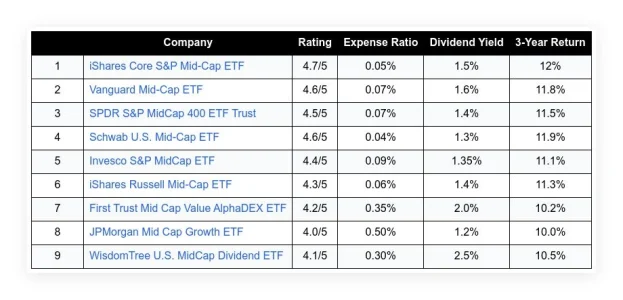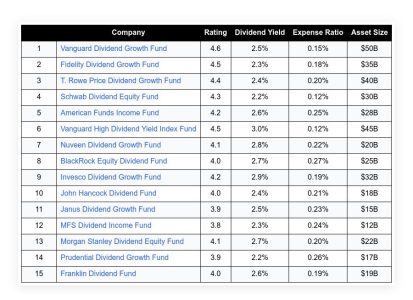According to financial experts, one way to learn about money is to educate yourself about personal finance concepts. Specifically, making informed financial decisions can be achieved by reading books, taking online courses, listening to podcasts, and consulting with a financial advisor.
In other words, understanding how money works, from budgeting to investing, is essential to financial literacy. With that said, if you’re just starting out or looking to brush up on your knowledge, here are 35 essential financial terms to know:
Table of Contents
Toggle1. Amortization
The process of gradually paying off a debt through regular payments that cover both principal and interest over time.
Consider, for instance, a 30-year mortgage with monthly payments. During the early years, more of the payment goes toward interest, while in the later years, more goes towards principal. Over time, the debt gradually decreases, as shown in the amortization schedule.
2. Annual Percentage Rate (APR)
A term used to describe the cost of borrowing money as a percentage. In addition to interest, the loan may have fees as well.
In the long run, borrowing at a lower APR is more cost-effective since the borrower pays less in interest and fees. On the other hand, a higher APR increases the loan’s overall cost, which can significantly impact monthly payments and the total amount repaid. For that reason, borrowers should compare APRs before selecting a loan product.
3. Asset
Any item that can be converted into cash. A property, an investment, and a savings account are all included in this category. Financial planning relies heavily on assets since they are the basis of wealth for individuals or organizations.
Assets can provide financial stability during emergencies, generate income, and secure loans. However, to achieve long-term financial goals, assets must be properly managed and grown.
4. Balance Sheet
A balance sheet is an analysis of a company’s assets, liabilities, and equity at a particular point in time. For investors and stakeholders, it provides a clear picture of a company’s financial health. As a result, the ability of a company to meet its short-term and long-term obligations can be assessed.
Additionally, a balance sheet assists in making informed decisions regarding investments, credit, and overall financial planning.
5. Budget
To manage one’s finances and reach financial goals, an income and expense plan is outlined over a specific period of time.
Budgeting is essential, as it helps allocate resources efficiently. Tracking income and expenses can help businesses and individuals avoid overspending and save for the future. Moreover, a well-structured budget helps identify areas for cost-cutting, thus optimizing financial performance.
6. Capital Gain
A profit is earned from the sale of an asset worth more than the price paid for it.
Capital gains are typically subject to taxation, and the rate varies based on how long the asset was owned before sale. Most short-term capital gains, derived from assets held less than a year, are taxed at ordinary income rates. In general, long-term capital gains are taxed at a lower rate than short-term capital gains.
7. Compound Interest
Interest is calculated on the initial principal, which includes accumulated interest from previous periods. You can grow your money faster this way because it creates a “snowball” effect.
Over time, adding interest to the principal results in exponential growth in long-term savings due to compound interest. As you save longer, the effect becomes more pronounced, making it a powerful tool for accumulating wealth. By starting to save early and utilizing compound interest, you can greatly enhance your financial security in the future.
8. Credit Score
Based on your credit history, this is a number that lenders use to evaluate the risk of lending you money.
Maintaining a good credit score means paying your bills on time and keeping your credit card balances low. Furthermore, avoid opening too many credit accounts at once, and check your credit report regularly. You can build and maintain a strong credit history by consistently practicing these habits.
9. Debt-to-Income Ratio (DTI)
Lenders use this ratio to determine whether a borrower will be able to manage monthly payments and repay debts. The debt-to-income ratio is calculated by dividing total monthly debt by gross monthly income.
Borrowers with a low DTI have good financial health and manageable debt levels relative to their income. Alternatively, a high DTI may indicate financial stress, making it harder to get a loan or receive a favorable interest rate. Maintaining a healthy DTI is essential for long-term financial stability and credit access.
10. Diversification
Diversifying investments among different assets is a risk management strategy to reduce exposure to single risks.
In other words, diversification can stabilize your portfolio and mitigate potential losses from underperforming assets. Different assets can offset one another’s performance, so this balanced approach provides more consistent returns over time. As a result, diversification enhances long-term investment returns and reduces overall risk.
11. Dividend
Distributing a portion of a company’s earnings to shareholders, usually cash or stock.
The company’s board of directors generally determines dividend payments. As soon as the dividend is declared, the company announces the payment date and the record date to shareholders. When the dividend is paid, shareholders who hold the stock on the record date are eligible to receive the dividend.
12. Emergency Fund
An account set aside to cover unexpected expenses or financial emergencies, such as medical bills, car repairs, or job loss.
For financial stability and peace of mind, it is imperative to keep an emergency fund. More importantly, with it, you can cover unexpected expenses without going into debt. Also, you can use this fund to manage difficult times without compromising your long-term financial goals.
13. Equity
Equity is the value of an asset after all debts associated with it have been repaid. For example, equity in a home is the difference between the property’s market value and the mortgage balance.
It is important to understand equity in investing because it represents how much of an asset you truly own, free of debt obligations. Whether you pay down debts or increase the value of an asset, equity grows, allowing you to sell the asset at a profit if you decide to do so. Additionally, you will be able to borrow money more efficiently and be more financially stable if you have more equity.
14. Expense
Costs associated with goods or services.
Tracking expenses is essential for achieving long-term financial goals and maintaining financial health. It can help you identify spending patterns, reduce unnecessary costs, and allocate funds more efficiently. Keeping an eye on your expenses will ensure you make informed financial decisions by living within your means.
15. Expense Ratio
An annual fee paid by mutual funds or exchange-traded funds to their shareholders. In percentage terms, it is expressed as a percentage of the fund’s average assets.
When selecting funds, it is important to consider expense ratios because these fees directly impact your investment returns. Over time, high expense ratios will erode your gains, reducing your overall investment performance. To maximize your returns and achieve your financial goals, you should choose funds with low expense ratios.
16. FICO Score
This is a credit score created by Fair Isaac Corporation, ranging from 300 to 850, used by lenders to determine credit risk.
Several factors determine a FICO score, including payment history, amounts owed, length of credit history, types of credit used, and new credit inquiries. Most of the score comes from the payment history, about 35%. To maintain a high score, you should keep balances on your credit cards and other revolving credit low.
17. Fixed Interest Rate
A constant interest rate in a loan or investment provides predictability of payments or returns.
Having a fixed interest rate allows borrowers to plan their finances more effectively. Over time, it keeps monthly payments stable despite market fluctuations. When economic uncertainty prevails, this predictability can offer peace of mind.
18. Gross Income
The amount earned before taxes and other deductions. Wages, bonuses, and other earnings are included here as well.
For financial planning and budgeting, knowing your gross income is essential. In addition, it allows you to determine whether you are eligible for a loan or mortgage and how much tax you have to pay. Knowing your gross income is important to set realistic savings goals and manage expenses efficiently.
19. Inflation
An increase in prices over time erodes purchasing power.
For example, high inflation can increase the cost of groceries, gas, and housing, making it more expensive to maintain the same standard of living. As a result, even if your income remains the same, you can buy less with your money, which can strain your budget and savings.
20. Interest
In most cases, a percentage is used to express the cost of borrowing money. You pay interest on loans and investments, and you earn interest on savings and investments.
For example, if you have a savings account that pays a 2% annual interest rate, your money will grow over time. Conversely, taking out a 5% interest rate loan will increase the amount you owe, making it more expensive to repay. Whether you are earning or paying interest, interest can help you build wealth or increase your debt obligations.
21. Investment Portfolio
An individual or institution’s collection of investments such as stocks, bonds, real estate, and cash equivalents.
By diversifying an investment portfolio, you reduce the impact of a single investment’s poor performance. This strategy can also help you achieve more stable and consistent returns over time. A mix of assets can help individuals protect their financial goals from market volatility.
22. Liability
Financial obligations that you owe to others, such as loans, mortgages, and credit card balances.
In order to maintain financial stability and health, it is essential to manage liabilities effectively. Controlling your debts can avoid high-interest costs and reduce financial stress. In addition to helping you achieve your financial goals faster, effective liability management allows you to allocate more resources to saving and investing.
23. Liquidity
The ease with which an asset can be converted into cash without affecting its market value. In terms of liquid assets, cash is considered to be the most liquid. Examples of liquid assets include savings accounts, money market accounts, and publicly traded stocks.
Alternatively, illiquid assets include real estate, collectibles, and private equity. Because they are inflexible, illiquid assets are usually harder to sell and convert to cash.
24. Mutual Fund
A diversified portfolio of stocks, bonds, or other securities is purchased by pooling money from many investors.
An example of a successful mutual fund is the Vanguard 500 Index Fund. It exposes investors to 500 of the nation’s largest companies by tracking the performance of the S&P 500 Index. With consistent returns over time, it has become a popular choice for long-term growth investors.
25. Net Worth
The difference between the value of your assets and your liabilities. In other words, it represents the state of your finances at a specific point in time.
To make informed financial decisions, you must regularly monitor your net worth. In addition to helping you identify areas for improving your financial health, it can also help you reduce debt and increase savings. Furthermore, it allows you to adjust your financial goals and strategies as your circumstances change.
26. Opportunity Cost
Giving up the next best alternative when making a decision.
Understanding opportunity cost is necessary for effective financial planning. It assists individuals and businesses in evaluating the potential benefits of various options and making more informed decisions. To maximize their overall return, they must consider what resources are sacrificed when choosing one alternative over another.
27. Principal
Amount of money borrowed or invested, excluding interest or dividends.
As part of loans, the principal determines the amount of interest charged over the loan’s life. In general, higher principal amounts result in higher interest payments. As a result, knowing the principal can help borrowers make informed financial decisions and manage their debt more effectively.
28. Recession
This is a period of economic decline characterized by a decline in GDP, an increase in unemployment, and a slowdown in industrial activity.
Recessions can have significant long-term effects, such as reducing consumer confidence and spending. It can also lead to long-term high unemployment rates, which make reentering the workforce difficult. A prolonged downturn in the economy can also result in businesses closing permanently, which reduces economic growth and innovation.
29. Return on Investment (ROI)
Using the net profit divided by the investment’s initial cost, it evaluates the investment’s efficiency.
For example, if you invested $10,000 in a business venture and made $2,000 in profits, your ROI would be 0.2 percent or 20%: $2,000 (profit) / $10,000 (investment). As a result, 20% of the investment gained a return.
30. Risk Tolerance
An investor’s ability to endure fluctuations in investment returns is influenced by his financial goals, time horizon, and comfort level with volatility.
Understanding one’s risk tolerance is essential for making informed investment decisions. As a result, investors can choose asset allocations that are aligned with their financial goals and time horizon. This ensures a more disciplined and effective investment strategy by preventing emotional reactions to market volatility.
31. Savings Rate
The percentage of income a person or household saves rather than spends.
A high savings rate helps individuals or households build a financial cushion in case of emergencies. Additionally, it allows them to invest in future opportunities, such as education or retirement. A higher savings rate can also allow one to enjoy greater peace of mind and financial security.
32. Stock
Investments that represent ownership in a company. In addition to owning stock, you may be entitled to a share of profits. There are, however, risks and rewards associated with investing in stocks.
Investing in stocks can result in high returns if the company performs well and its value increases over time. However, the downside is that you can always lose your investment if the company underperforms or runs into financial difficulty.
33. Tax Deduction
Income reduction that reduces taxes owed. Medical expenses, mortgage interest, and charitable contributions are standard deductions.
As a result of tax deductions, people can retain more income thanks to a reduced overall tax liability. You can use this extra income to save, invest, or pay down your debt. When tax deductions are properly utilized, financial management can be more efficient and more stable.
34. Variable Expense
Costs that fluctuate over time, like utility bills or groceries.
The best way to manage variable expenses is to track and analyze your spending patterns regularly. By creating a flexible budget that considers these fluctuations, you will be able to allocate funds appropriately. Putting aside a buffer can also reduce your overall budget expenses by providing a cushion for months with higher variable expenses.
35. Wealth
Assets and financial resources accumulated.
Wealth accumulation can enhance long-term financial stability during economic downturns or personal financial crises. Through it, individuals can invest in diversified asset portfolios that generate passive income and grow over time. Substantial wealth can also provide more opportunities for strategic financial planning, such as tax optimization and legacy planning.
Conclusion
In order to succeed in long-term financial management, make informed investment decisions, and achieve financial success, it is essential to understand these financial literacy terms. After all, understanding these concepts will make you more confident in navigating the financial world.
FAQs
What is financial literacy?
Financial literacy means understanding budgeting, saving, investing, and credit concepts.
Why is it important to learn about money?
Understanding money management can help you make informed financial decisions, avoid debt, and achieve your financial goals.
How do I create a budget?
You should track your income and expenses, set financial goals, and allocate your money accordingly. For example, the 50/30/20 rule is a popular budget method: 50% for needs, 30% for wants, and 20% for savings.
What are the basics of investing?
Investing involves putting money into assets to earn a profit. Various investment options are available, including stocks, bonds, and real estate.
Where can I learn more about personal finance?
You can find a wide variety of online resources, books, and courses. Among the most popular options are:
-
Websites. You can find comprehensive articles, tutorials, and FAQs on various financial topics on websites like Due, Investopedia, NerdWallet, and The Balance.
-
Books. You can read books about personal finance, budgeting, investing, and debt management, such as “The Total Money Makeover” by Dave Ramsey and “Rich Dad Poor Dad” by Robert Kiyosaki.
-
Courses. Learn financial literacy through Coursera, edX, or Khan Academy.
-
Local Workshops. Attend a workshop or seminar at your local library, community center, or financial institution.
-
Seek Professional Advice. A financial advisor can provide you with personalized advice and guidance.
Image Credit: nappy; Pexels
















